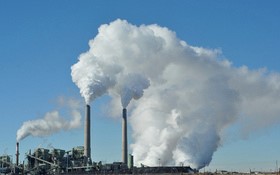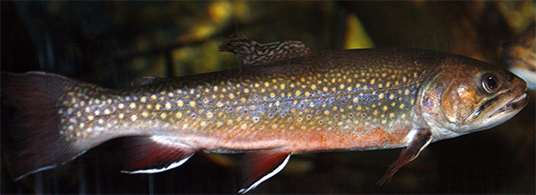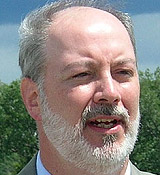
Adirondack Research Forum Offers Fascinating View of Current Science - Part 1
Monday, March 14, 2016
By: John F. Sheehan - Adirondack Council Communications Director
This is the first in a two-part series.
I had the privilege of participating in the 2016 Adirondack Research Forum at the Adirondack League Club in early March. Research scientists came from as far away as Oregon and Ohio to explain their work and hear about their colleagues’ studies. Much of this research is taking place in the Adirondack Park and the scope is impressive. Speakers discussed projects on genetic testing, behavioral studies, chemistry, and new technology.
You may be asking yourself, “why is this research so important?” Studies like these help us convince policymakers to create science-based policies to better protect Adirondack wilderness, waters, wildlife and communities from acid rain, climate change and many other pollutants and dangers.
Here are a few of the highlights from the forum.
Greg Lawrence, U.S. Geological Survey in Troy, NY - http://ny.water.usgs.gov/
Studying the impact of aluminum pollution in streams in the western Adirondacks.
Inorganic aluminum is very common in rock and soil, and is normally bound up in benign compounds. But, acid rain breaks down those compounds and releases aluminum into storm runoff, which flows into streams and lakes. This aluminum is deadly to fish and many tree species. It breaks down gill tissue, suffocating fish, and prevents trees from absorbing crucial nutrients and water.

Left: Healthy Trout gillls
Right: Trout gills damaged by aluminum
Reductions in the air pollutants that cause acid rain have also led to significant drops in aluminum levels in streams across the Adirondack Park. However, it takes longer for aluminum levels to decrease in soil than it does in water, so impacts on trees are expected to last longer than streams and fish.
Colin Beier, SUNY College of Environmental Science and Forestry in Syracuse, NY - http://www.esf.edu/fnrm/
Studying the economic impacts from acid rain.
Among those impacted by acid rain are trout fisheries that have succumbed to damage from aluminum and other stresses. Colin noted that healthy trout populations are economically important to the Adirondack Park. Trout fishermen spend $33 per day in the Park when fishing for trout, while all other anglers spend an average of $12 per day. The value of trout fishing visits decreases proportionately as acidity increases.
Colin also discussed the potential impacts of various types of forest management. His models show that sugar maples in acidified soils had the greatest chance of remaining abundant if the forest was left unharvested or was managed to maximize the growth and survival of maples. Harvesting mature trees in an acidified forest would cause a decline in the percentage of maples.
Amy Shaw of Syracuse University
Studying mercury levels in fish. The trend Park-wide is that mercury deposition is declining as acid rain decreases. Less acid in runoff, streams and lakes means a reduction in the rate at which mercury is converted into a form that harms fish and fish-eaters (including people).
The trend Park-wide is that mercury deposition is declining as acid rain decreases. Less acid in runoff, streams and lakes means a reduction in the rate at which mercury is converted into a form that harms fish and fish-eaters (including people).
Some heavy metals, such as lead, dissipate if you stop consuming them, but mercury does not. Eaters of mercury-tainted fish keep accumulating small doses of mercury over long periods, which remain in their bodies and become more concentrated. Mercury can damage nerve and brain cells and causes birth defects. The U.S. Environmental Protection Agency indicates that mercury concentrations of 160 parts-per-billion (ppb) cause damage to wildlife, and warns against human consumption of fish of 300 ppb.
While more than 50 Adirondack lakes and ponds are slated to be removed from the list of chronically acidified waters following recent testing, several other lakes have been found to contain mercury levels above 300 ppb. These include Hinckley Reservoir and Limekiln Lake in Herkimer County, Rollins Pond in Franklin County and Lewey Lake in Hamilton County.
Mariah Taylor of Cornell University
Tracking trout/salmon recovery in two lakes on the League’s property.
As acid rain worsened in the 1970s, ‘80s and ‘90s, Honnedaga’s genetically unique strain of brook trout declined to the point where it was feared it had  become extinct. Fortunately, it had survived in the headwater streams.
become extinct. Fortunately, it had survived in the headwater streams.
Also, over the past five years, the League has been removing non-native smallmouth bass from Honnedaga Lake and First Bisby Lake. Bass had been stocked at the League in the 1940s to increase sport-fishing opportunities, but now it was competing with trout to survive. Fortunately, with the reductions in acid rain and the decreased competition from bass, the Honnedaga trout population has grown abundant.
The Adirondack Council is thankful for being invited to this research forum and for all of those scientists who have and still are researching the Adirondack Park’s water, wilderness and wildlife. This research provides the Adirondack Council and policymakers with the necessary information to make science-based decisions to better protect the Park for future generations to enjoy.
|
|||





